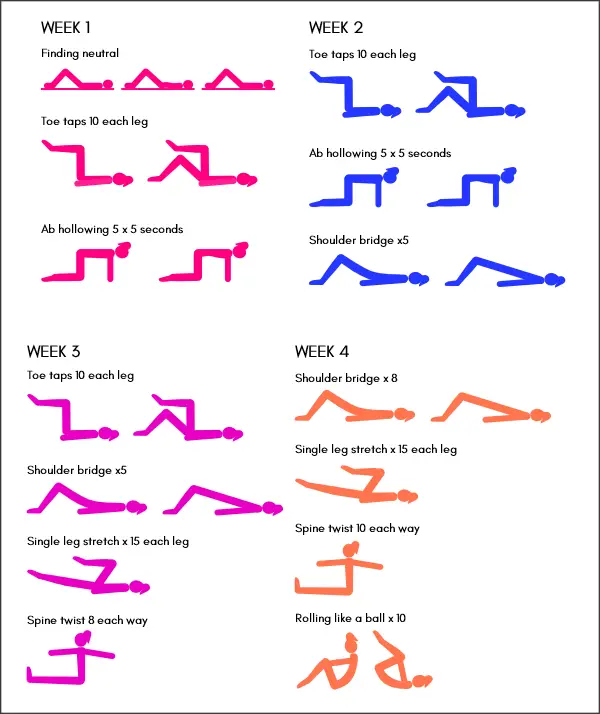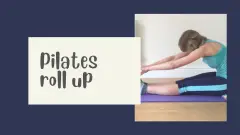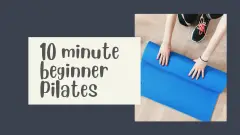Pilates is an exercise system that was developed by Joseph Pilates around 100 years ago. Pilates based his system around various principles which he believed contribute to having a healthy body. The early followers of the Pilates method were elite athletes and dancers. This means that most classic Pilates exercises are quite challenging and not suitable for beginners. Beginner Pilates programs therefore need to either modify the original exercises or use other exercises to build the skills necessary to do Pilates. This program starts by building a foundation using simple exercises. Then it goes on to introduce some of the classic Pilates exercises.
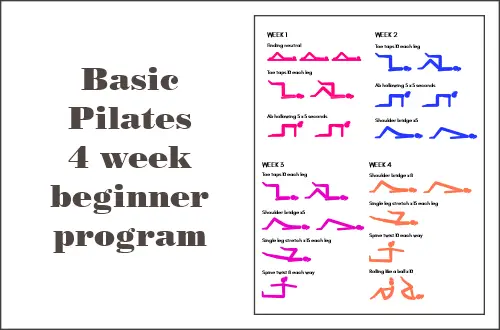
The Benefits of Pilates
Doing Pilates benefits physical and mental health in lots of ways. It has a strong mind-body element and a focus on breathing, which help with relaxation and mental health. Physical Pilates benefits include:
- A strong core
- Flexibility in muscles and joints
- Correct posture
- Smooth, controlled movement patterns
- Healthy spine
- Improved balance
What are the basics of Pilates?
Although there were only 34 mat exercises in Pilates original method, many other exercises are included in Pilates classes and programs. Generally, it’s considered acceptable to include any exercises which follow the basic Pilates principles. These include having a strong core to support all body movement, correct body alignment and focusing on smooth, controlled movement.
Basic Pilates routine
Notes on doing this workout
Please read the general exercise safety guidelines here.
You need some sort of cushioning on the floor, ideally an exercise mat. See an exercise mat buying guide here. In particular, make sure you have enough cushioning for the shoulder bridge and “rolling like a ball” exercises. The exercise instructions are below and at the end of the post you can get a printable download of the 4 week plan.
Week 1
Week 1 is an introduction to finding and engaging the core muscles. First, you need to be able to find the neutral pelvis position. To do Pilates effectively, you need to be able to hold your pelvis in the “neutral” position. Our pelvis hinges on our thigh bones and can tilt forwards and backwards. This is essential to allow for a good range of movement, but when the core muscles are weak, the pelvis ends up tilting when it shouldn’t. For most Pilates exercises, the pelvis should be held in the neutral, non-tilting position. This is how to find your neutral pelvis:
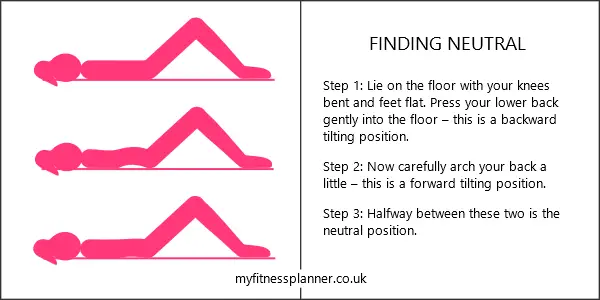
Once you are happy with being able to find the neutral position, you can do the 2 exercises for this week: heel taps and ab hollowing.
Heel taps – do 10 on each leg
In this exercise, the core muscles must hold on to the neutral position, while you lower one leg at a time to the floor.

Abdominal hollowing – do 5 x 5 seconds
Abdominal hollowing is just sucking the core muscles in. You can do it in any position – standing, sitting, lying, kneeling .. but doing it in the all-4s kneeling position is good because you are working directly against gravity.
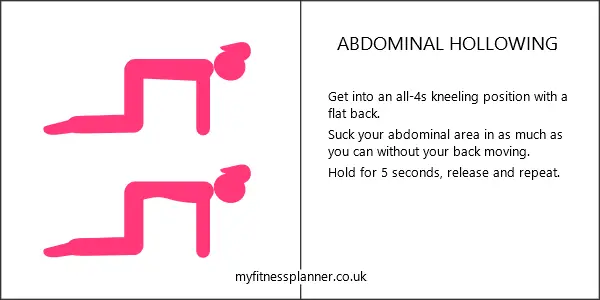
Week 2
New exercise: shoulder bridge – do 5
The Pilates shoulder bridge looks similar to a glute bridge, but it’s done differently. Whereas in the glute bridge, the objective is just to lift your hips up and down to work your glutes, with the Pilates shoulder bridge the objective is to work through the joints of your spine. It improves mobility in your spine and core control.
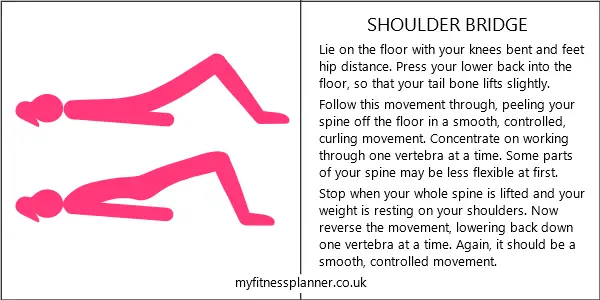
Week 2 routine
Heel taps 10 each leg
Ab hollowing 5 x 5 seconds
Shoulder bridge 5
Week 3
New exercises: spine twist and single leg stretch
The spine twist is good for core control and upper back strength and mobility. You need to sit up with your back straight and your pelvis in neutral. If you have tight hamstrings (muscles at the back of your thighs), you’ll find this difficult. If necessary, bend your knees a little to allow you to sit up straight.
In the single leg stretch, your core stabilising muscles need to work hard to keep your pelvis in neutral. Make sure that you don’t allow your back to arch.
Spine twist – 5 each way
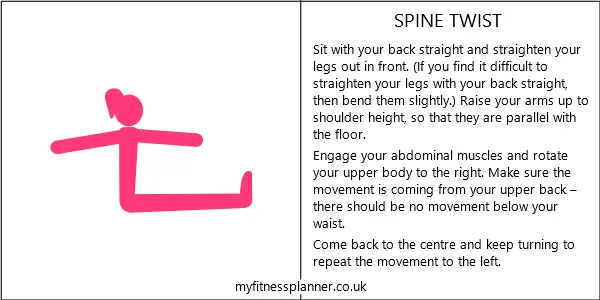
Single leg stretch – 10 on each leg
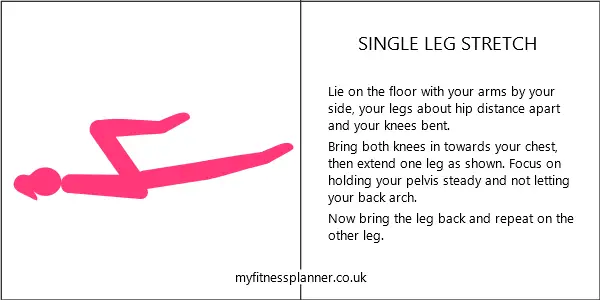
Week 3 routine
Heel taps 10 each leg
Shoulder bridge 5
Spine twist 5 each way
Single leg stretch 10 on each leg
Week 4
New exercise “Rolling like a ball” – do 10
In this exercise, the core muscles should be controlling the movement, you shouldn’t be relying on momentum. Try to make the movement smooth and controlled.
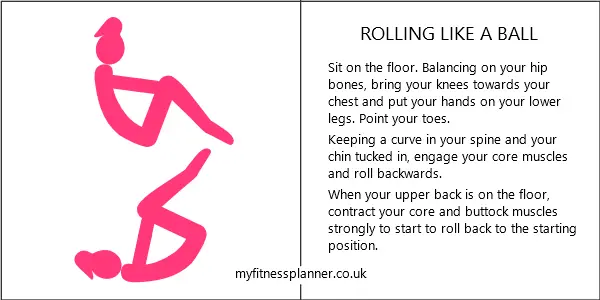
Week 4 routine
Shoulder bridge 5
Spine twist 5 each way
Single leg stretch 10 on each leg
Rolling like a ball 10
